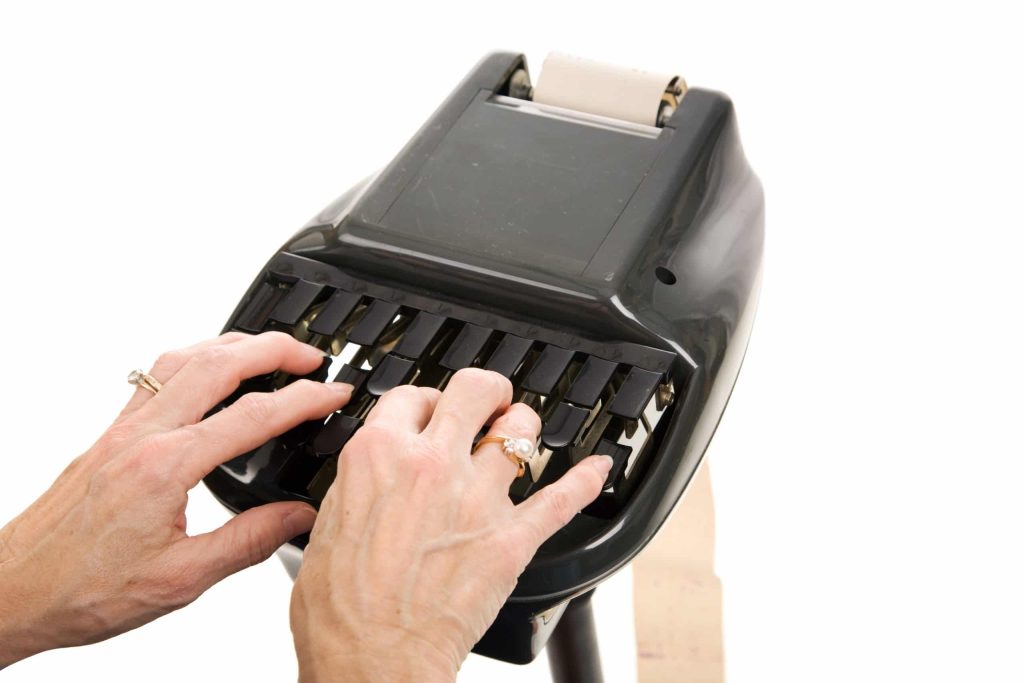Guest Post: Stenography vs. Voice Reporting
In order to make the decision between stenography and voice reporting, a deeper understanding of how the two work is necessary. Although their objective is the same, the method is quite different. The objective is to have a clear and concise record of court proceedings to be relied upon well after the actual day.
The process to become a certified stenographer or voice reporter is quite similar. Stenography and voice reporting both require you to complete a court reporting course as they are both forms of court reporting. In Ontario there is a registry for those who are certified to be a court reporter, to attain this designation all required course material must be completed.
Now onto the differences:
Stenography
Stenography is done on a small specialized keyboard. The keyboard contains only 21 letters, not the 26 standard alphabet letter count. Learning to type on a stenograph is similar to learning how to type in a different language. It may seem difficult to comprehend, but for those who have mastered the art of stenography they can type up to 300 words per minute, which far exceeds that of even the strongest typist on a QWERTY keyboard. Reading a transcript written by a stenographer may not be second nature to everyone, but a trained eye can read it flawlessly. A stenographer will sit in the courtroom and type every word that is said for the record. Stenographs have been modernized and now create an electronic copy of the transcript as opposed to the former use of steno paper.
Voice Reporting
In a courtroom setting voice reporting, or voice writing, is done by the reporter wearing a mask called a stenomask and repeating everything said in the courtroom into the mask. The mask is specially designed so that the voice reporter is not heard in the courtroom so no disruptions occur. The words spoken into the stenomask are transferred into an external USB signal processor where the words are translated into a series of digital ones and zeros and then put through a voice recognition program where it is translated into streaming text. It may seem like a cumbersome project but there is a 98% accuracy rate with voice reporting, and it is a widely used tool in the court system.
The end result for stenography and voice reporting is the exact same. A big difference is that stenography takes much longer to master than voice reporting does. Both are highly regarded in the court reporting business and both are efficient means of capturing what is said in a courtroom.
For more information or if you require court reporting services, please contact On The Record Court Reporting and we’ll be happy to assist you.

